What’s New for Compatibility Matrix
Added support for auto scaling node groups in EKS, GKE, and AKS clusters. Compatibility matrix now supports adding node groups to EKS, GKE, and AKS clusters that are attached to auto scaling groups. This update allows you to create clusters that are more representative of real customer environments, as most enterprise EKS, GKE, and AKS environments use auto scaling to automatically increase (scale out) and decrease (scale in) the size of node groups based on changing resource needs. To use auto scaling node groups, include the [.inline]--min-nodes [.inline] and [.inline] --max-nodes [.inline] options when creating a EKS, GKE, or AKS cluster. Docs.
Multiple node groups available for EKS, GKE, AKS, and K3s. Previously we supported multiple nodegroups for EKS clusters. We've expanded this to include all cloud distributions and K3s. With multiple node groups, you can create clusters with mixed Intel and ARM architectures, or add GPUs to just some instances.
GPU instance types available for EKS, GKE, and AKS clusters. you can now add up to 4 Tesla T4 GPUs on each of the n1 instance types that compatibility matrix supports. This matches our existing GPU support on EKS.
Embedded Cluster distribution is now supported. You can now create the new replicated embedded cluster distribution on compatibility matrix.
Added alpha support to create S3 buckets with EKS clusters. Many applications don't need just Kubernetes and S3 object storage is a common requirement. To support this, we've added the ability to add S3 buckets to EKS clusters after creation.
What’s New for Vendor Portal
More granular workload status info now available in the vendor portal for active instances. The vendor portal now displays the status of individual workloads for an instance in both Current State and the Instance Activity feed. This helps you pinpoint the cause of application issues more quickly and efficiently by providing more granular insight into the app status. Docs.
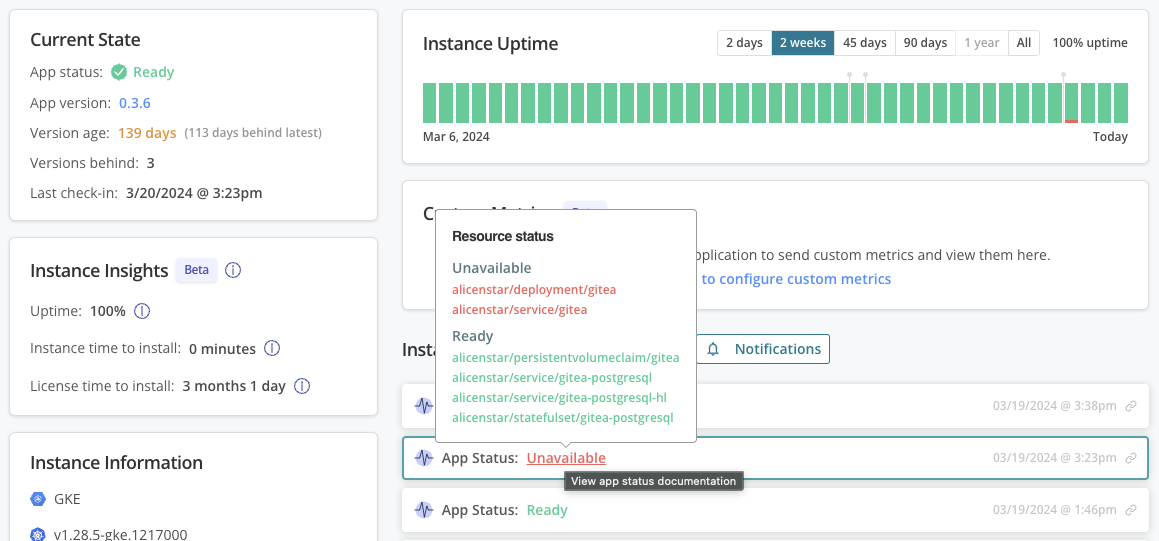
Added the ability to view airgap bundle contents for a given release in the Release History view. The vendor portal now displays the list of images included in a given release’s airgap bundle, removing the need to download and unpack a bundle just to determine its contents in a development or support situation (Demo Video). This capability is available only for airgap bundles that are newly created or rebuilt after March 21, 2024.
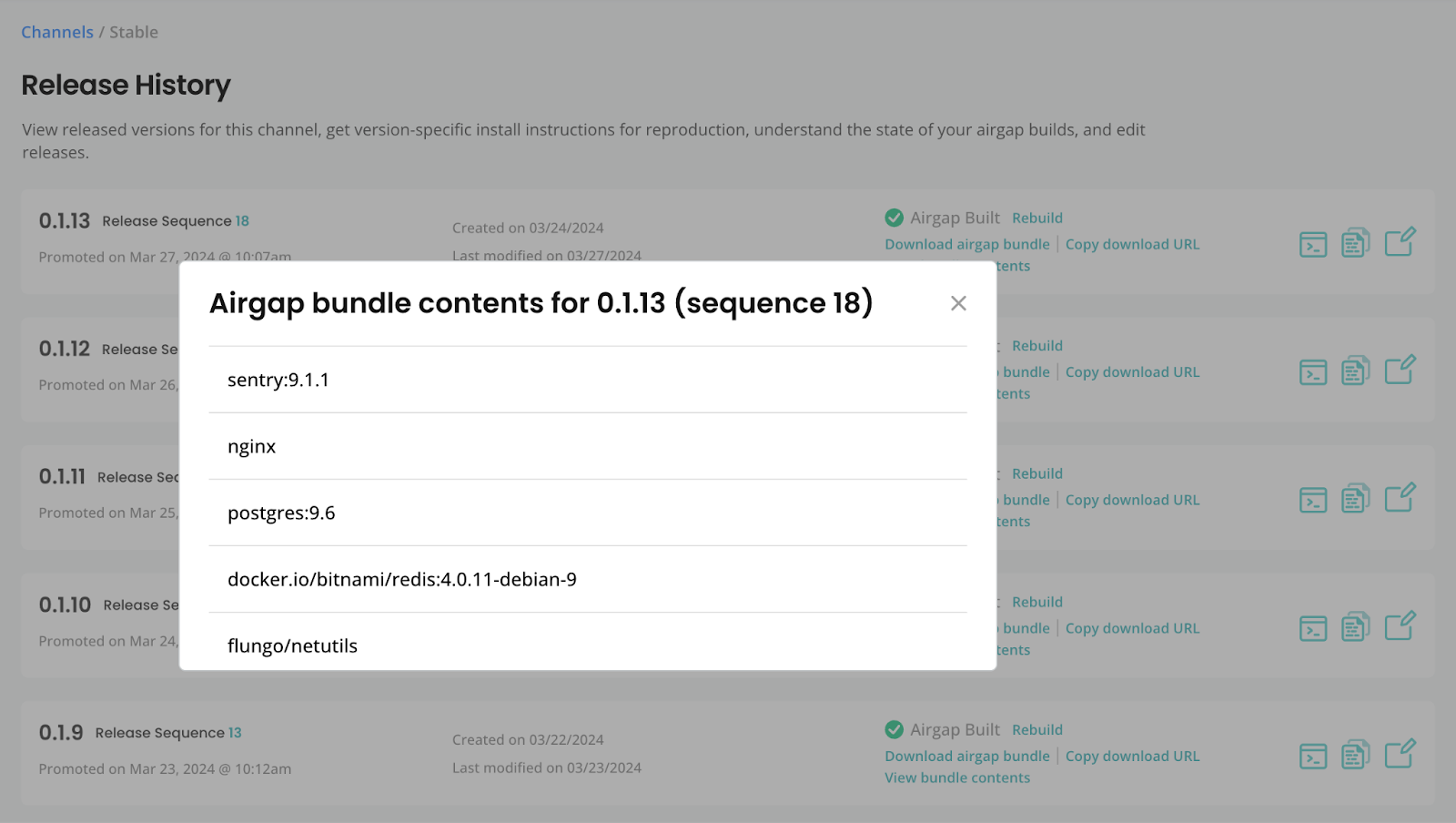
Added the ability to search by customer email in the Vendor API. You can now also search for customers by their email address using the Vendor API in addition to the vendor portal. See Filter and Search Customers and the API docs for more information.
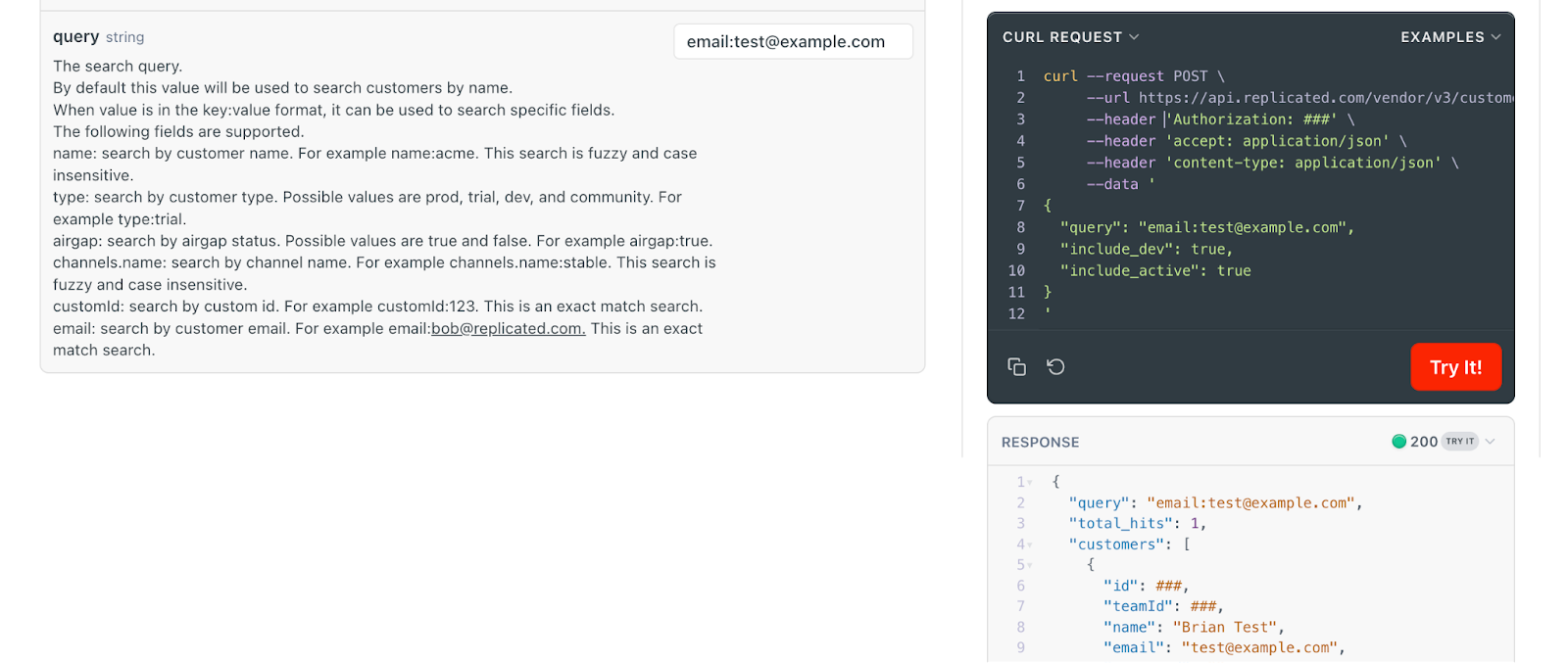
What’s New for Product Documentation
Navbar and sidebar improvements for findability. The docs site has been updated with a couple key improvements to make it easier to navigate and find what you’re looking for quickly:
- First, a new navbar at the top of the site includes links that jump right to the documentation for our main solutions, helping users bypass the noise of the sidebar.
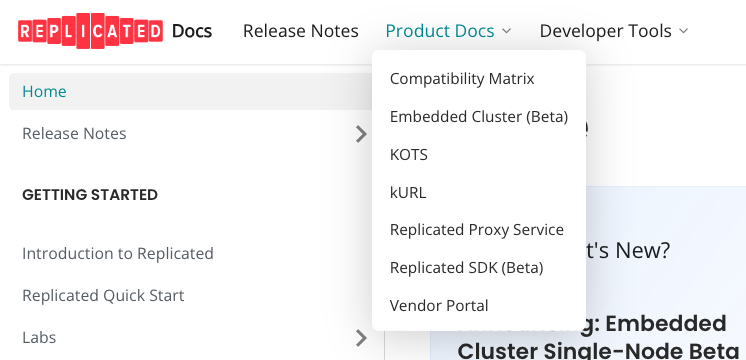
- The sidebar itself was also updated to bring the KOTS documentation back into the main fold under a regular dropdown category, rather than having the KOTS docs live in a separate sidebar. This way, users looking for information about KOTS are not redirected away from the main view, helping them to maintain context and reducing confusion.
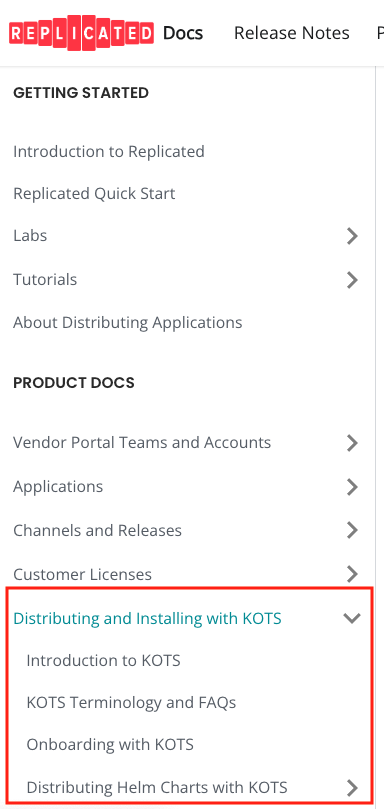
What’s New? and Did You Know? cards on the docs site landing page highlight new and existing features. To help improve discoverability of our new and existing features, the landing page of the docs site now includes What’s New? And Did You Know? cards. The purpose of the What’s New? card is to bring attention to recently-released features, while the Did You Know? card spotlights existing features that you might not have heard about.
